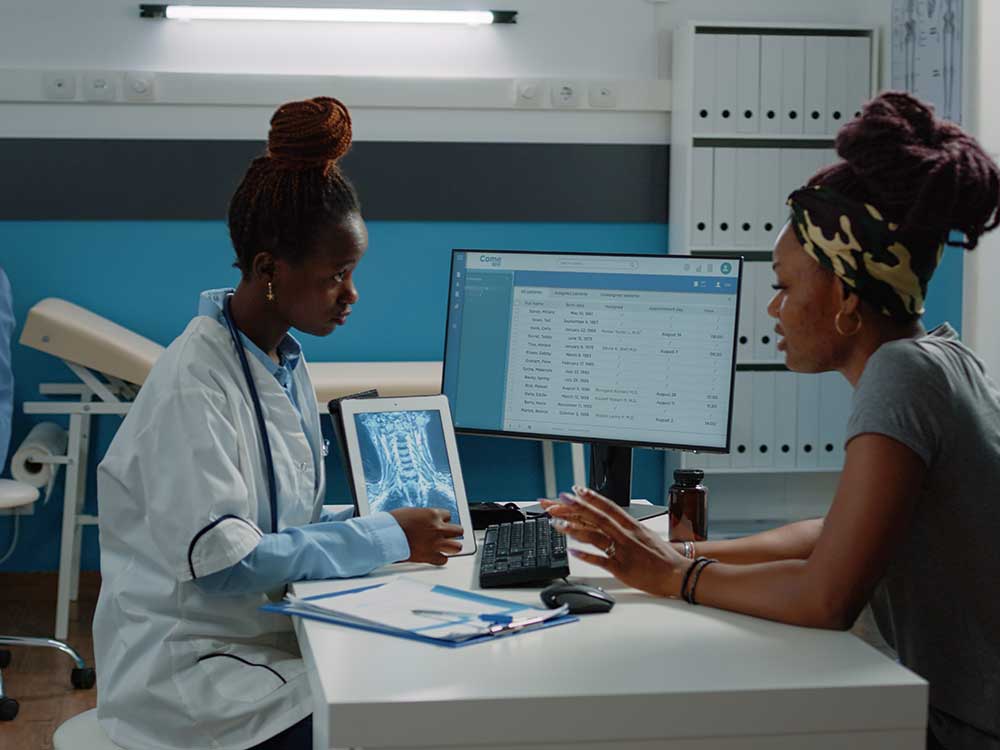Recognizing the Trick Functions and Obligations in Medical Administration
Recognizing the Trick Functions and Obligations in Medical Administration
Blog Article
Ideal Practices in Medical Administration for Improving Efficiency and Decreasing Costs
In the ever-evolving landscape of healthcare, the search of ideal practices in clinical administration is extremely important for improving effectiveness and suppressing costs. By incorporating innovative technologies such as digital wellness documents and telemedicine, doctor can streamline procedures and enhance client care. However, modern technology alone is not a cure all; enhancing resource allocation and fostering joint interaction amongst care teams are similarly essential (medical administration). As organizations aim to stabilize high quality and cost, what techniques should be prioritized to attain these double goals? The response to these inquiries hold the secret to a more lasting medical care system.
Leveraging Advanced Technology
The assimilation of electronic remedies right into healthcare systems has changed the means centers operate, improving processes and enhancing person treatment. By systematizing client information, EHRs eliminate the requirement for troublesome documents and help with seamless communication among health care providers.
Telemedicine is another technological advancement that has reinvented individual communication. It provides comfort for both patients and medical care specialists by making it possible for remote appointments, which can lower the requirement for in-person check outs and enhance appointment scheduling. Furthermore, telehealth platforms can extend healthcare accessibility to rural or underserved locations, linking spaces in treatment shipment.
Furthermore, using Expert system (AI) and equipment knowing is coming to be progressively widespread in predictive analytics, enabling for very early detection of possible health and wellness concerns and more informed decision-making. These modern technologies, when integrated effectively, can boost analysis accuracy and individualize individual therapy plans, eventually resulting in improved medical care results and operational performance.
Optimizing Source Allowance
By purposefully managing sources such as personnel, equipment, and finances, medical care facilities can considerably boost their functional performance, boost patient outcomes, and decrease unneeded expenses. The very first action in optimizing resource allowance includes conducting an extensive assessment of existing properties and determining areas where sources may be underutilized or overextended.
Focusing on source allotment based on person requirements and service demands is essential. This involves straightening sources with high-demand locations, such as emergency care or specialized treatments, to make certain prompt and efficient individual treatment. Executing flexible staffing versions can additionally enhance labor sources by changing personnel allowance in action to rising and fall client quantities. Additionally, embracing telemedicine and various other technical solutions can minimize physical source restrictions by offering alternative methods for patient-provider interactions.
Funds ought to be diligently monitored and allocated with calculated foresight to sustain both short-term functional needs and lasting institutional goals. This consists of investing in training programs that boost staff competencies and embracing energy-efficient methods that lower functional expenses (medical administration). Inevitably, an optimized resource allowance method cultivates a lasting healthcare environment that is receptive, efficient, and financially prudent
Streamlining Process Processes
When medical care centers aim to enhance operational effectiveness, simplifying operations processes becomes a critical focus. Efficient process decrease redundancy, remove unneeded steps, and improve coordination among healthcare specialists. This strategy not just speeds up service delivery but also boosts the top quality of person treatment.

Following, technology assimilation plays a considerable duty in improving a knockout post workflows. Applying digital health documents (EHRs) and electronic physician order access (CPOE) systems lowers documentation, lessens human error, and guarantees info comes to all pertinent employees. Additionally, leveraging telemedicine systems can streamline patient consultations and find out here follow-ups, lowering the pressure on physical framework.

Inevitably, streamlined process lead to set you back reductions and enhanced individual contentment, cultivating an extra lasting health care atmosphere.
Enhancing Data Management
Building upon streamlined operations, maximizing information monitoring comes to be an essential part in progressing health care administration. Efficient data management systems are essential for maintaining exact individual documents, enhancing decision-making, and guaranteeing compliance with regulative standards. By executing robust data administration options, health care facilities can improve the high quality of person treatment while at the same time minimizing operational expenses.
One secret aspect of boosting data management is the assimilation of advanced digital wellness document (EHR) systems. These systems help with the seamless exchange of client details throughout different departments, lowering replication of examinations and reducing errors. A well-designed EHR system sustains information analytics, enabling doctor to recognize patterns and make notified choices regarding person care.
Additionally, protecting patient information is vital. Adopting thorough cybersecurity actions, consisting of file encryption and normal audits, makes sure the stability and privacy of sensitive details. This not just safeguards clients yet likewise maintains the institution's reputation.
Investing in personnel training is another critical variable. Informing medical care experts on data management techniques improves their ability to effectively utilize innovation, bring about enhanced patient outcomes. In verdict, enhancing information administration through sophisticated technology and extensive training is vital for attaining efficiency and price reduction in clinical administration.
Fostering Collaborative Interaction
A vital element in progressing medical administration is cultivating collaborative interaction among medical care professionals. Efficient communication is paramount for guaranteeing smooth patient treatment, optimizing treatment outcomes, and minimizing errors. By motivating open dialogue and control throughout multidisciplinary groups, medical care organizations can boost their functional efficiency and decrease unnecessary prices.
Central to this method is the combination of communication innovations such as digital wellness documents (EHRs) and secure messaging systems, which promote the fast exchange of vital client information. These devices allow healthcare providers to accessibility and share data in real time, ensuring that all staff member are educated and lined up in their decision-making processes. Regular group conferences and interdisciplinary rounds can better advertise a society of cooperation and liability.
Educating programs focused on boosting communication abilities are additionally essential. Eventually, fostering joint interaction leads to improved healthcare shipment and cost financial savings.

Verdict
Including advanced modern technology, such as electronic health documents and telemedicine, alongside optimized source allotment and structured workflow processes, is important for enhancing efficiency in medical administration. Efficient information monitoring and fostering collaborative communication amongst medical care teams are critical for lessening redundancies and improving care high quality. By focusing on preventive treatment and participating in webpage top quality improvement efforts, healthcare organizations can attain significant expense savings and boosted individual end results, thus making certain lasting health care shipment in an increasingly intricate setting.
Report this page